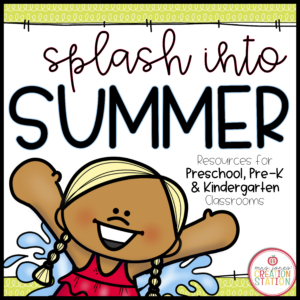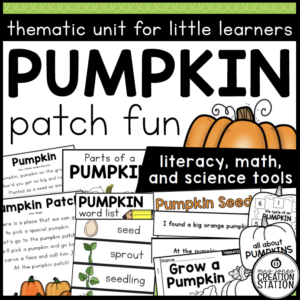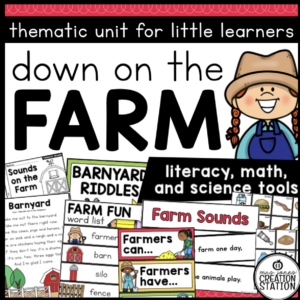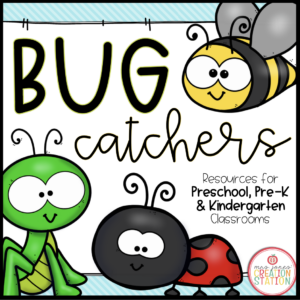TRANSPORTATION UNIT FOR PRESCHOOL, PRE-K AND KINDERGARTEN
This transportation resource includes thematic lessons, activities, poems, songs and centers for your little learners.
Buy the BUNDLE and SAVE! You can purchase this resources in the Thematic Activities for Little Learners Bundle and the Little Learners Mega-Bundle!
THIS RESOURCE INCLUDES
Lesson Resources
Week 21 Plans
This is a template for lesson plans during transportation week of school. Pick and choose what ideas and resources work for your learners.
Transportation – Whole Group
These resources can be used during whole group instruction for a transportation theme. They include a poem, word cards, tracing page and table sign in sheets.
Interactive Poem
Use this poem during a thematic lesson, whole group or a literacy center and have learners match the poem based the color words.
Lesson Plans
Thematic Plans
Use these plans as a guide for engaging transportation read alouds and activities in the classroom.
Transportation
Read Transportation in My Neighborhood and add to the Community Map created from the community helpers unit. Learners may add methods of transportation to the map.
Traffic Signs
Read Signs in My Neighborhood and have learners add signs to the Community Map.
Cars
Read Cars by Anne Rockwell and complete the cars portion of the anchor chart. Learners may begin the transportation booklet.
Planes
Read Planes by Anne Rockwell and complete the planes portion of the anchor chart. Learners may continue the transportation booklet.
Boats
Read Boats by Anne Rockwell and complete the boats portion of the anchor chart. Learners may continue the transportation booklet.
Transportation Sensory Charts
Explore travel with the five senses. Complete the charts together and have learners draw and write about travel using their senses on the interactive page.
Predictable Chart Class Book
Use this resource to create a class book from the predictable chart created during the week.
Literacy Centers
Literacy Center | Alphabet Match
Have learners match the uppercase, lowercase and initial sound pictures on the traffic light.
Literacy Center | Letter Formation
Have learners use play dough or manipulatives to form each letter and write the letters using markers.
Literacy Center | CVC Words Write the Room
Have learners find the picture cards around the room and write each word on the work page provided.
Math Centers
Math Center | Number Sort
Have learners match the number cards onto the pocket chart.
Math Center | Number Order
Have learners count up and count down using the number cards.
Math Center | Pattern or Not
Have learners sort the pattern cards by whether or not they are a repeating pattern.
Transportation Sorting Center
Have learners sort the cards by how they travel.
LEARNING STANDARDS INCLUDED IN THIS RESOURCE
Common Core Standards
Language Arts
CCSSL.K.1a
Print many upper- and lowercase letters.
CCSSRF.K.1c
Understand that words are separated by spaces in print.
CCSSRF.K.1d
Recognize and name all upper- and lowercase letters of the alphabet.
CCSSRF.K.2d
Isolate and pronounce the initial, medial vowel, and final sounds (phonemes) in three-phoneme (consonant-vowel-consonant, or CVC) words. (This does not include CVCs ending with /l/, /r/, or /x/.)
CCSSRF.K.3
Know and apply grade-level phonics and word analysis skills in decoding words.
CCSSRF.K.3a
Demonstrate basic knowledge of one-to-one letter-sound correspondences by producing the primary sound or many of the most frequent sounds for each consonant.
CCSSRF.K.3b
Associate the long and short sounds with common spellings (graphemes) for the five major vowels.
CCSSRI.K.7
With prompting and support, describe the relationship between illustrations and the text in which they appear (e.g., what person, place, thing, or idea in the text an illustration depicts).
CCSSSL.K.4
Describe familiar people, places, things, and events and, with prompting and support, provide additional detail.
CCSSSL.K.5
Add drawings or other visual displays to descriptions as desired to provide additional detail.
CCSSW.K.2
Use a combination of drawing, dictating, and writing to compose informative/explanatory texts in which they name what they are writing about and supply some information about the topic.
Math
CCSSK.CC.A.2
Count forward beginning from a given number within the known sequence (instead of having to begin at 1).
CCSSK.CC.A.3
Write numbers from 0 to 20. Represent a number of objects with a written numeral 0-20 (with 0 representing a count of no objects).
CCSSK.CC.B.4
Understand the relationship between numbers and quantities; connect counting to cardinality.
CCSSK.CC.B.4a
When counting objects, say the number names in the standard order, pairing each object with one and only one number name and each number name with one and only one object.
CCSSK.CC.B.4b
Understand that the last number name said tells the number of objects counted. The number of objects is the same regardless of their arrangement or the order in which they were counted.
CCSSK.CC.B.4c
Understand that each successive number name refers to a quantity that is one larger.
CCSSK.CC.B.5
Count to answer “how many?” questions about as many as 20 things arranged in a line, a rectangular array, or a circle, or as many as 10 things in a scattered configuration; given a number from 1-20, count out that many objects.
Texas Essential of Knowledge and Skills
Language Arts
TEKSLA.K.2.A.iii
Developing and sustaining foundational language skills: listening, speaking, reading, writing, and thinking–beginning reading and writing… The student is expected to: demonstrate phonological awareness by: identifying the individual words in a spoken sentence.
TEKSLA.K.2.A.viii
Developing and sustaining foundational language skills: listening, speaking, reading, writing, and thinking–beginning reading and writing…The student is expected to: demonstrate phonological awareness by: blending spoken phonemes to form one-syllable words.
TEKSLA.K.2.A.x
Developing and sustaining foundational language skills: listening, speaking, reading, writing, and thinking–beginning reading and writing…The student is expected to: demonstrate phonological awareness by: segmenting spoken one-syllable words into individual phonemes.
TEKSLA.K.2.C.i
Developing and sustaining foundational language skills: listening, speaking, reading, writing, and thinking–beginning reading and writing…The student is expected to: demonstrate and apply spelling knowledge by: spelling words with VC, CVC, and CCVC.
TEKSLA.K.2.D.iii
Developing and sustaining foundational language skills: listening, speaking, reading, writing, and thinking–beginning reading and writing…The student is expected to: demonstrate print awareness by: recognizing that sentences are comprised of words separated by spaces and recognizing word boundaries.
TEKSLA.K.2.D.v
Developing and sustaining foundational language skills: listening, speaking, reading, writing, and thinking–beginning reading and writing…The student is expected to: demonstrate print awareness by: identifying all uppercase and lowercase letters.
TEKSLA.K.2.E
Developing and sustaining foundational language skills: listening, speaking, reading, writing, and thinking–beginning reading and writing…The student is expected to: develop handwriting by accurately forming all uppercase and lowercase letters using appropriate directionality.
TEKSLA.K.5.B
Comprehension skills: listening, speaking, reading, writing, and thinking using multiple texts… The student is expected to: generate questions about text before, during, and after reading to deepen understanding and gain information with adult assistance.
TEKSLA.K.5.E
Comprehension skills: listening, speaking, reading, writing, and thinking using multiple texts. The student uses metacognitive skills to both develop and deepen comprehension of increasingly complex texts. The student is expected to: make connections to personal experiences, ideas in other texts, and society with adult assistance.
TEKSLA.K.5.H
Comprehension skills: listening, speaking, reading, writing, and thinking using multiple texts. The student uses metacognitive skills to both develop and deepen comprehension of increasingly complex texts. The student is expected to: synthesize information to create new understanding with adult assistance.
TEKSLA.K.5.I
Comprehension skills: listening, speaking, reading, writing, and thinking using multiple texts…The student is expected to: monitor comprehension and make adjustments such as re-reading, using background knowledge, checking for visual cues, and asking questions when understanding breaks down with adult assistance.
TEKSLA.K.6.F
Response skills: listening, speaking, reading, writing, and thinking using multiple texts. The student responds to an increasingly challenging variety of sources that are read, heard, or viewed. The student is expected to: respond using newly acquired vocabulary as appropriate.
TEKSLA.K.8.D.i
Multiple genres: listening, speaking, reading, writing, and thinking using multiple texts–genres…The student is expected to: recognize characteristics and structures of informational text, including: the central idea and supporting evidence with adult assistance.
Math
TEKSMA.K.2.A
Number and operations. The student applies mathematical process standards to understand how to represent and compare whole numbers, the relative position and magnitude of whole numbers, and relationships within the numeration system. The student is expected to: count forward and backward to at least 20 with and without objects.
TEKSMA.K.2.B
Number and operations. The student applies mathematical process standards to understand how to represent and compare whole numbers, the relative position and magnitude of whole numbers, and relationships within the numeration system. The student is expected to: read, write, and represent whole numbers from 0 to at least 20 with and without objects or pictures
TEKSMA.K.2.C
Number and operations. The student applies mathematical process standards to understand how to represent and compare whole numbers, the relative position and magnitude of whole numbers, and relationships within the numeration system. The student is expected to: count a set of objects up to at least 20 and demonstrate that the last number said tells the number of objects in the set regardless of their arrangement or order.
TEKSMA.K.2.D
Number and operations. The student applies mathematical process standards to understand how to represent and compare whole numbers, the relative position and magnitude of whole numbers, and relationships within the numeration system. The student is expected to: recognize instantly the quantity of a small group of objects in organized and random arrangements.
TEKSMA.K.2.E
Number and operations. The student applies mathematical process standards to understand how to represent and compare whole numbers, the relative position and magnitude of whole numbers, and relationships within the numeration system. The student is expected to: generate a set using concrete and pictorial models that represents a number that is more than, less than, and equal to a given number up to 20.
CONNECT WITH MJCS
WEBSITE | FACEBOOK | INSTAGRAM | PINTEREST | TEACHERS PAY TEACHERS
© Mrs. Jones’ Creation Station, Inc




